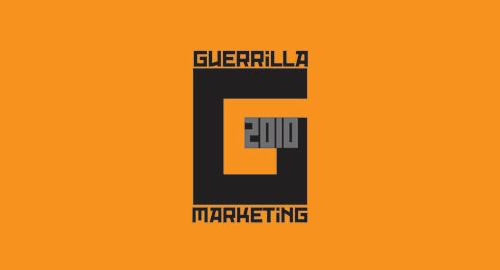Social Media Revolutionizes Guerrilla Marketing

Guerrilla marketing used to be easy to define. If a New Yorker happened to notice a Jeep Grand Cherokee driving up the side of a building near Madison Square Garden and stopped to watch, it was pretty obvious he’d been snared by a guerrilla stunt. Or if Londoners went down to the Tube and found a mock living room of Ikea furniture instead of government-issue concrete seating, here again the pedestrian could feel the hook pulling at his lip.
But, of course, the obit has been written for the analog days. Budgets are tight, and the demand for immediate splash is enormous. The result of these realities has coalesced in the past year or so—guerrilla stunts with a decidedly social media bent.
But, as with most marketing that’s been bullied into the digital space, there’s no playbook to follow, and the sidewalk is strewn with evidence of how brands are feeling their way. Here’s how the early guerrilla categories are shaking out. Some start with the standard street stunt, post a vid on YouTube, then pray it goes viral (as Coke did with its rigged-up “Happiness Machine” this past summer). Others take it a step further by installing something provocative, asking consumers to participate in the gambit, then share their contributions online. That’s what Panasonic did when it left a 9-foot-tall pigeon in a London park as a way of encouraging people to take their own distorted perspective photos. Then there are brands that rely solely on a Web audience, not a live one, for all the buzz, such as the ballsy move by Euro carrier Germanwings, which sent a PR-sabotage group aboard a rival airline.
The guerrilla-meets-digital permutations are endless, but their very proliferation proves that the “street” in street-level marketing is no longer just the asphalt variety. “I’ve noticed in the last two years that there’s a bigger and bigger trend toward creating events that have social media hooks to them,” says Sam Ewen, president of New York-based guerrilla marketing firm Interference, Inc.
Breaking through the media clutter, however, is not any easier. YouTube has become so clogged with videos, Ewen says, that seriously funny street marketing that might have easily snared 100,000 views a year ago is now lucky to get 1,500. What about relying on Twitter for buzz? Same problem: Dilution. “If I have 10,000 Twitter followers, and they’re following 800 people, by the time they check in, my tweet’s so far down they’ll never see it.”
Digital’s influence on guerrilla has even compelled some marketers to get out of the stunts entirely and let the masses do it—a social-to-offline trend that starts with a crowd instead of hoping to draw one. “The best engagements that I see,” observes David Meerman Scott, author of The New Rules of Marketing and PR, “are when the audience is involved and participating while they are being entertained.”
Maybe so, but those schemes can also be the ones that backfire the loudest. Of course, even the biggest guerrilla-gone-wrong tales won’t be enough to deter brands from swaggering into this new realm. To follow, a number who have—some with terrific results, others with… Well, read on.
“Guerrilla marketing is all about creativity and attaining maximum exposure for minimum expense, which makes it the perfect match for social media,” says Michael Del Gigante, president and executive creator director of MDG. “While some rely on larger-than-life stunts and tricks, the real trick is creating a campaign that engages your audience and makes a positive connection.”
Michael Del Gigante is president and creative director at MDG. MDG is a full-service South Florida advertising agency, with offices in Florida and New York, that specializes in developing targeted internet solutions, exceptional social media executions, and solid branding and media buying strategies that give clients a real competitive advantage.
For more information on how you can better utilize social media, call 561-338-7797 or log on to www.mdgsolutions.com.

